Adelaide is the capital of the state of South Australia. It was founded in 1836 and named after Adelaide by Saxony-Meiningen, a British queen at the time. The city was laid out in a layout with perpendicular streets, wide boulevards and large squares. This can still be seen in central Adelaide.
Adelaide is Australia’s fifth largest city and it offers a number of attractions both in and around the city. In the center lies Victoria Square, which is surrounded by major institutions such as the state supreme court, federal court and city post office from the colonial era.
In Adelaide there are also exciting museums such as the historic setting of the Ayers Historic House Museum. There is also the city’s zoo and botanical garden which gives a good impression of the area’s fauna. Shopping and atmosphere at Adelaide Central Market is also a must during a visit to the city.
In the town’s harbor there is also a good atmosphere and opportunities for boating, while you can see everything from above on a hike to Mount Lofty Summit. If you want to get a little closer to nature and Australian wildlife, a trip to the koalas and kangaroos in Cleland Wildlife Park is obvious.
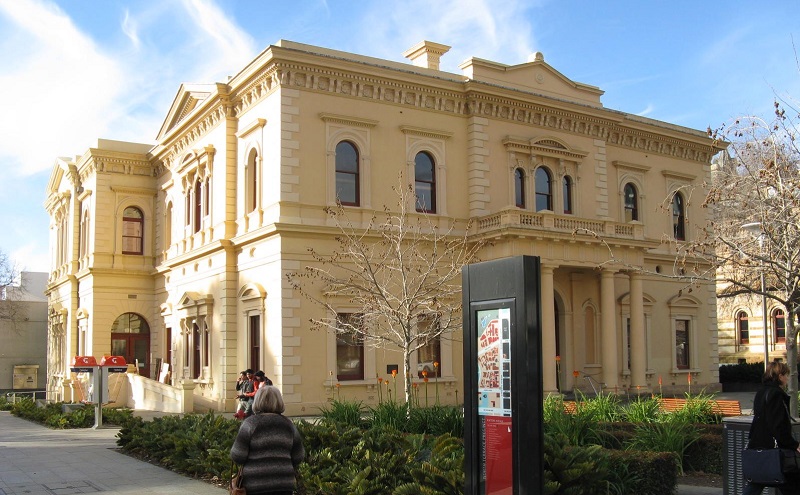
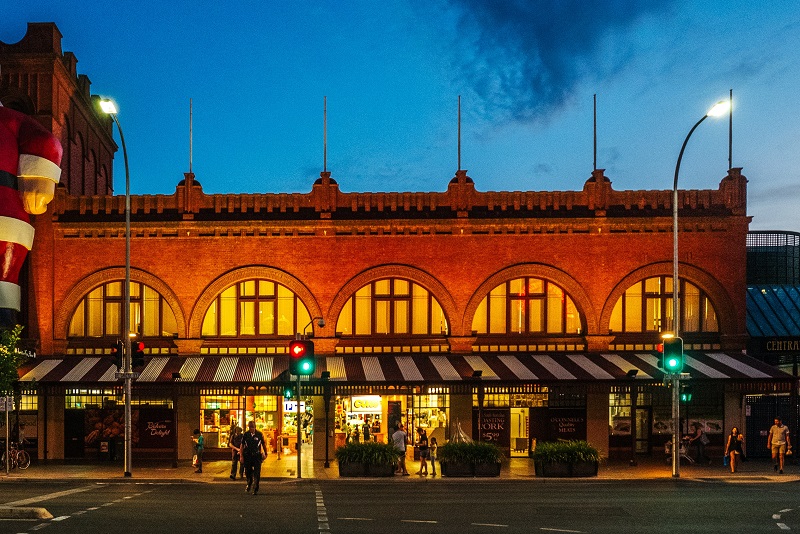
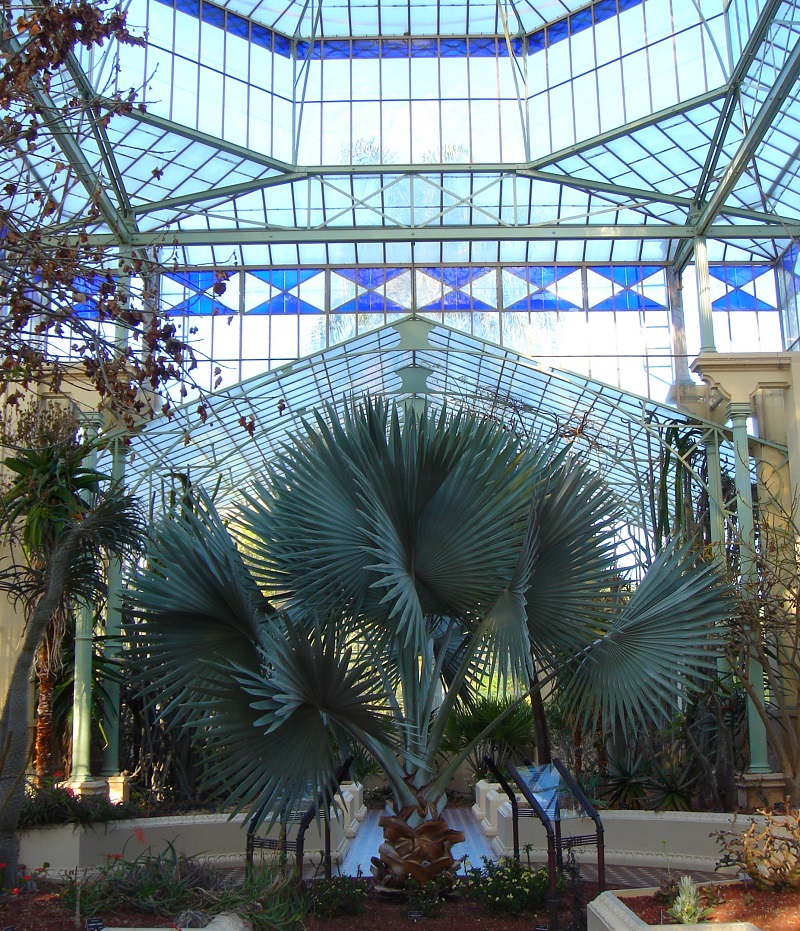
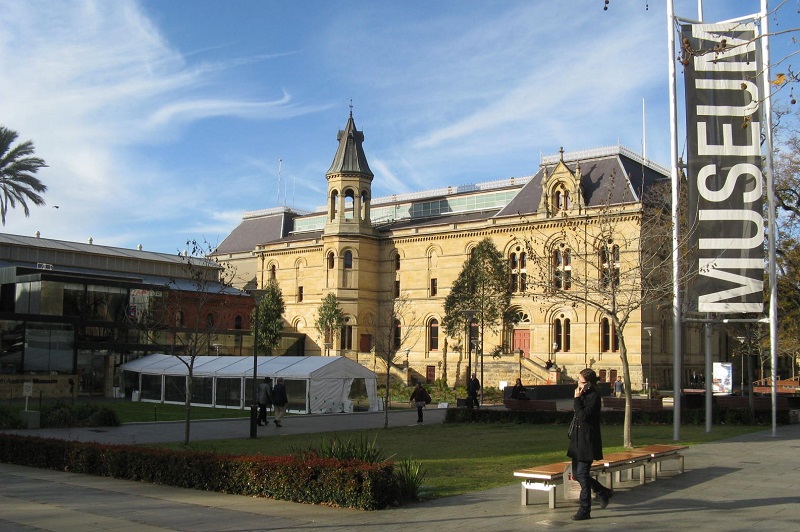
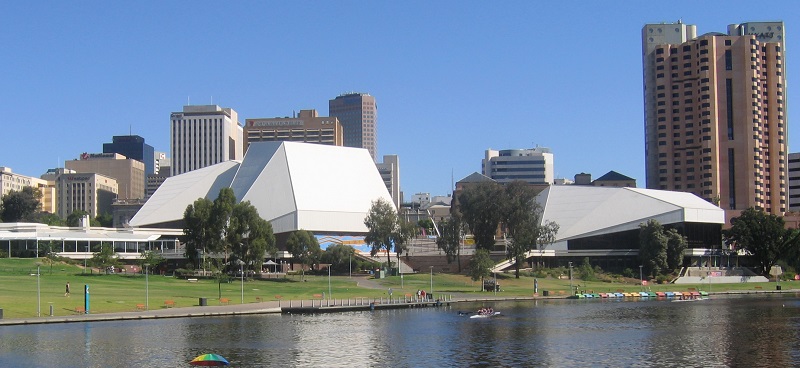
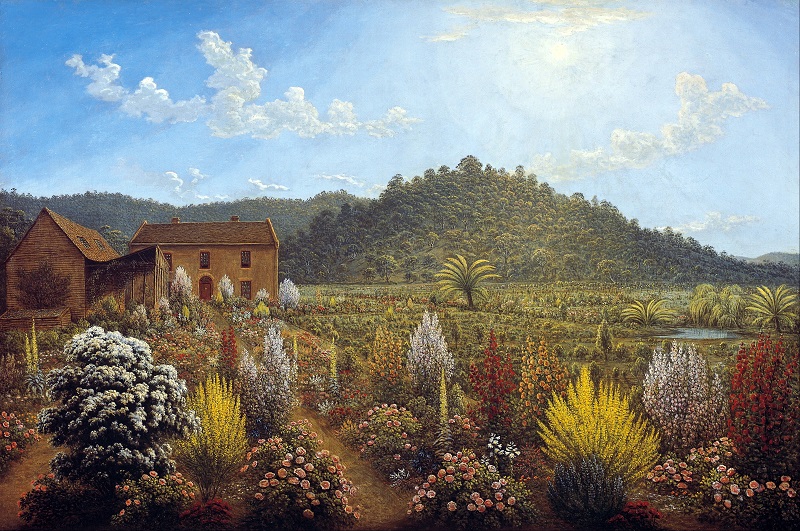
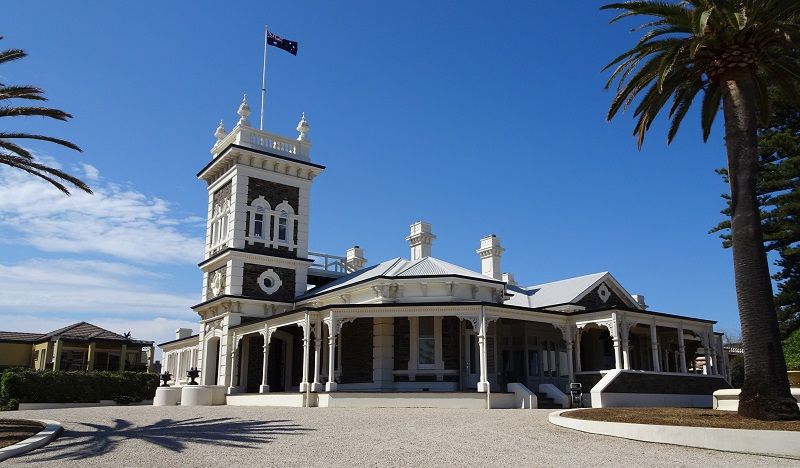
Tarndanya’s time
The plains around present-day Adelaide were inhabited by Aboriginal Kauma tribes before Europeans came to Australia. Their territory went from Cape Jervis to Port Broughton on the map of our day.
The Aborigines named the place where Adelaide is today, for Tarndayna, who names a red male kangaroo cliff. It was believed to have been between 300 and 1,000 Aborigines in the area by the British arrival.
British Exploration
British Matthew Flinders and French Nicolas Baudin both sailed along the South Australian coasts in the early 1800s. Flinders named Mount Lofty in 1802, but none of the European expeditions sailed up what is the Port Adelaide River.
It was not until 1830 when Charles Sturt explored the Murray River that the knowledge of the Adelaide area was better described. Sturt noted that the plains looked advantageous for development, and that led to a more thorough expedition in 1831; initiated by New South Wales Governor Ralph Darling.
The expedition leader in 1831 was Captain Collet Barker. He was killed by Aborigines in the area, but despite this, the results of the investigations were an on-site recommendation as an area for a new colony.
The preparation of the new colony
Colonies in Australia had been established as camps for prisoners until the 1830s. This caused certain problems in the colonies, and in the late 1820s a group of people in Britain talked about a new way of building colonies; namely, by voluntary settlements.
Edward Gibbon Wakefield was behind the new ideas, and he proposed a system where settlers should buy land instead of getting it. The money from the land sale would then be used to transport skilled workers to the new colony to build it with people who were engaged rather than people sent to Australia as punishments.
Edward Wakefield’s secretary, Robert Gauger, propagated Wakefield’s thoughts and this led to the formation of the South Australian Association. In 1834, it was helped by The Duke of Wellington when the British Parliament passed The South Australian Colonization Act that enabled the new settlement. Wakefield would call the new colony Wellington, but King William IV preferred the queen’s name, Adelaide.
A commission was then set up to sell land for at least £ 3,500. Land was marketed and sold, and free transportation was promised for qualified people who would take work for others and save on the wages to buy land themselves and thereby hire new settlers.
The largest investor was The South Australian Company, led by slave owner George Fife Angas. The company bought enough land for the colony to be realized. When the legal requirements for sales were met, the king signed the documents for the new colony. It happened in 1836.
The location must be found
In February 1836, the ships John Pirie and Duke of York set out and headed for South Australia. In the following months, several ships arrived with more settlers. Most of the ships sailed to Kangaroo Island and our present-day Kingscote, where officials had to decide how the practical settlement should take place and be managed.
Surveyor William Light was given two months to find the most suitable place for the settlement. His job was to find an area of arable land, water resources, building materials, a possible harbor, etc. Kangaroo Island, Port Lincoln and Encounter Bay were places that did not live up to his requirements.
Most of the settlers were moved from Kangaroo Island to Holdfast Bay at present-day Glenelg, and on December 28, 1836, they were joined by Governor Hindmarsh, who could proclaim the start of the colonial rule in South Australia.
The newcomers were impatient to get started, and Light had to work quickly to find the right place for Adelaide. Port River was good as a port, but there was no fresh water. The River Torrens was then found, and William Light, upon closer examination, recommended a location along the river and between the harbor and the mountains of the area as the proper place.
Governor Hindmarsh believed that the settlement should be about three kilometers closer to the port than the Lights proposed site. After much discussion, the settlers voted on the two possible locations, and Light’s proposal won by the votes of 281 to 127. After that, the building of Adelaide could begin.
Adelaide’s Foundation
After deciding on the right place for Adelaide’s construction, William Light’s job changed to ensure the city’s best start and long-term development.
Light used the landscape topography to plan the city. For example, the Torrens Valley was laid out for parks and recreation areas, with plots in the city were located on higher land north and south of River Torrens. Adelaide itself was established at an area of 2.8 km²/1.1 sq mi located south of the river, while North Adelaide was laid out with an area of 1.38 km²/0.53 sq mi north of the river.
William Light also laid out an actual city plan for both Adelaide and North Adelaide. The town plan for Adelaide included perpendicular streets with Victoria Square as the central square and with the squares Hindmarsh, Hurtle, Light and Whitmore incorporated in the street network. In North Adelaide the square Wellington Square was laid out, and space was allocated for government buildings, a hospital, a botanical garden, etc.
On March 23, 1837, the first lots were distributed. Settlers who had bought land from home were allowed to choose first, and the remaining pieces were auctioned for prices from 2 to 14 guineas. A few weeks later, some plots of land were resold for between £ 80 and £ 100, which was a sign that the future was bright for Adelaide.
After leaving the town itself, William Light and his people were to begin the survey of agricultural land. George Kingston, as Light’s second-in-command, was sent to London to ask more people for the big task – and also to have Governor Hindmarsh recalled.
By the end of 1837, Light and his team had surveyed 243 km²/94 sq mi of agricultural land, and Adelaide’s population had risen to about 2,500. When George Kingston returned from London in June 1838, 605 km²/234 sq mi had been measured. However, Light did not get any more resources, and as a consequence, he quit his job. Hindmarsh was recalled, and on October 12, 1838, Geroge Gawler arrived as new governor.
The economy of the colony
The new colony in Adelaide suffered from a poor economy for the first time. When George Gawler took over as governor in October 1838, he came to a town largely devoid of public funding. Officials were underpaid, and about 4,000 immigrants lived in temporary housing.
Gawler was given a budget of up to £ 12,000 in annual expenses, with the addition of £ 5,000 which could be used in various emergencies. However, he had been sent to the colony with the assurance of a basic funding from the government.
At the same time, an agricultural economy began to take shape. The first sheep and other livestock were sailed to Adelaide from Tasmania, and since then sheep came overland from New South Wales. With the many sheep, wool production was established, which became the backbone of the colony’s economy in the early years.
Over the years, more and more farms were also established that cultivated the land. The grain farms were more expensive and took longer to establish than farms with sheep farming, but the economy was favorable, and in 1860 wheat was grown from Encounter Bay in the south to Clare Valley in the north.
In the town of Adelaide itself, the development was intended to center around Victoria Square and the extra-wide Grote Street and King William Street. However, developments were fastest in some of the city’s narrowest streets, Rundle Street and Hindley Street, as these were closest to the city’s water supply and Port Road, which was the access road to the city’s harbor.
Many public buildings were constructed. This included a governor’s residence, a police station, a prison, a hospital, a customs building and a new quay in Port Adelaide. However, the investments did not save the colony’s needy economy.
British investors had become interested in New Zealand and surveys showed that there was a limited area of good land available around Adelaide. The cost of living of the inhabitants also increased considerably around 1840, and increased public expenditure ended with a bankruptcy and change of the colony’s form of government.
As a result of the bankruptcy, the British Parliament approved a £ 155,000 loan to save the colony, which, despite poor economy, had become agriculturally self-sufficient and with a good infrastructure in a few years.
The turning point of the 1840s
George Gray succeeded George Gawler as governor as a result of the colony’s poor economy. Gray cut public spending, and at the same time the 1840s were some good years for Adelaide with solid harvest results and ongoing finds of raw materials in the area.
Silver was first discovered at Glen Osmond in 1841, and the following year a copper deposit was found near Kapunda. In 1845, a major copper find was discovered at Burra, and it provided prosperity in the city and to those who had invested in the mineral extraction.
By the end of the decade, South Australia had become known as Australia’s entire food magazine, and the colony exported wheat, meat, wool, wine and fruit. When George Gray moved to New Zealand in 1845, the colony was buoyant and with good economy, which was a major change from the low point in 1842.
The last half of the 19th century
In 1851 gold was found in the colony of Victoria, and gold diggers and opportunists went to the gold fields to make money. It led to increased immigration to Victoria and many people from Adelaide moved from the city on the same occasion.
The relocation led to labor shortages, which weakened the economy and development. As a counterbalance to this, the demand for food, especially wheat, from Adelaide rose, so that gold money was indirectly earned here as well. After finding of gold or other earnings, many returned to Adelaide with money in their pocket, which was good on the town.
The population increased sharply in the colony, and politically South Australia gained the status of autonomous colony in 1857. At that time, approximately 110,000 people lived in South Australia, which introduced a two-chamber system with a seat in Adelaide.
Over the following decades, Adelaide evolved from growing a colonial city to becoming an actual metropolis based on European patterns. Thus, new institutions such as the city street lighting in 1867 and the University of Adelaide in 1874 were continuously founded and constructed. In 1881 the South Australian Art Gallery was established.
Meanwhile, South Australia had also become administrators of the Great Northern Territory, and during the exploration of the road to the north coast by John McDouall Stuart in 1862 new, large grazing lands were found at Lake Torrens and Lake Eyre. All of which helped to strengthen and expand Adelaide as one of the most important cities in Australia.
The 1890s were tough times for Australia, which was undergoing an economic depression. The tough years ended a chaotic growth and boom in land sales, and banks closed in Sydney and Melbourne. For Adelaide and South Australia, the years were less severe than for Victoria and New South Wales, although exports were almost halved. The colony was saved by not least the export of wine and copper, which was not significantly affected by the depression.
New development and depression
For Australia, the 20th century meant new times. Until then, Australia had been divided into six separate, self-governing colonies under Britain; New South Wales, Queensland, South Australia, Tasmania, Victoria and Western Australia. The colonies decided to form a federation, and on January 1, 1901, became the Commonwealth of Australia.
Adelaide’s town plan from the 1830s had proved long-term, and by the end of the 19th century most of the city’s many plots had been developed and built upon. In the year 1900, the city got electric street lights, and in 1909, the first of Adelaide’s electric trams ran the streets.
In addition to the trams, the Australian rail network was also being continuously expanded and the Federation Agreement between the Australian states included a federally funded runway between Perth in Western Australia and the Eastern States. Work on the track began in 1912 in Port Augusta, close to Adelaide.
World War I broke out in Europe in 1914, and many Australians participated in the war on the British side. From South Australia, there were 28,000 residents who volunteered for the war efforts and battles.
After the end of World War I in 1918, Adelaide experienced a boom, which was, however, interrupted by several years of drought, which produced poor harvest results and thereby reduced exports. The 1930s economic slowdown in much of the world also affected Adelaide and South Australia’s economy and development.
During World War II, Adelaide’s industries were expanded with large shipyards and other things, and it was during these years that Adelaide became a true industrial city. As during World War I, many volunteered for the war; this time around 70,000.
Postwar years
The decades after World War II brought new growth and new immigration. Between 1947 and 1973, 215,000 Europeans moved to South Australia, thereby gaining new skills and new labor.
The war industry was reshaped to produce electrical articles and Holden cars. A River Murray water pipeline was opened in 1955, and the same year, Adelaide Airport opened in West Beach.
In the remainder of the 20th century, Adelaide continued to grow, and new suburbs arose. New freeways were planned and rerouted, and the city’s trams were shut down in 1958 with only a single line left in operation.
It was also a period when art and culture flourished, and it was a deliberate effort by the board in the 1970s. The boom continued the following decades, with Adelaide hosting many events; for example, the Australian Formula 1 grand prix in the years 1985-1996.
Adelaide today
Adelaide is a city where you can still see the city plan from the 1830s in the city scape, and you can follow the city’s history through the architecture and preserved buildings from Adelaide’s development from a small settlement to a modern metropolis.
Adelaide is also a city with many opportunities for tourists. The location means that there are both beaches and mountains close by, and in the city you can enjoy museums, various sights and activities and a relaxed atmosphere. Adelaide is also central to train travel to other parts of the country; both to Perth with the Indian Pacific and with The Ghan, driving via Alice Springs to Darwin on the Australian north coast.

Overview of Adelaide
Adelaide is the capital of the state of South Australia. It was founded in 1836 and named after the British queen at the time. The city was laid out in a layout with perpendicular streets, wide boulevards and large squares. This can still be seen in the central part of the city.
It is Australia’s fifth largest city and it offers a number of attractions both in and around the city. In the center lies Victoria Square, which is surrounded by major institutions such as the state supreme court, federal court and city post office from the colonial era.
About the upcoming Adelaide travel guide
About the travel guide
The Adelaide travel guide gives you an overview of the sights and activities of the Australian city. Read about top sights and other sights, and get a tour guide with tour suggestions and detailed descriptions of all the city’s most important churches, monuments, mansions, museums, etc.
Adelaide is waiting for you, and at vamados.com you can also find cheap flights and great deals on hotels for your trip. You just select your travel dates and then you get flight and accommodation suggestions in and around the city.
Read more about Adelaide and Australia
Buy the travel guide
Click the “Add to Cart” button to purchase the travel guide. After that you will come to the payment, where you enter the purchase and payment information. Upon payment of the travel guide, you will immediately receive a receipt with a link to download your purchase. You can download the travel guide immediately or use the download link in the email later.
Use the travel guide
When you buy the travel guide to Adelaide you get the book online so you can have it on your phone, tablet or computer – and of course you can choose to print it. Use the maps and tour suggestions and you will have a good and content-rich journey.
Victoria Square • Holy Trinity Church • North Terrace • Mount Lofty

Overview of Adelaide
Adelaide is the capital of the state of South Australia. It was founded in 1836 and named after the British queen at the time. The city was laid out in a layout with perpendicular streets, wide boulevards and large squares. This can still be seen in the central part of the city.
It is Australia’s fifth largest city and it offers a number of attractions both in and around the city. In the center lies Victoria Square, which is surrounded by major institutions such as the state supreme court, federal court and city post office from the colonial era.
About the upcoming Adelaide travel guide
About the travel guide
The Adelaide travel guide gives you an overview of the sights and activities of the Australian city. Read about top sights and other sights, and get a tour guide with tour suggestions and detailed descriptions of all the city’s most important churches, monuments, mansions, museums, etc.
Adelaide is waiting for you, and at vamados.com you can also find cheap flights and great deals on hotels for your trip. You just select your travel dates and then you get flight and accommodation suggestions in and around the city.
Read more about Adelaide and Australia
Buy the travel guide
Click the “Add to Cart” button to purchase the travel guide. After that you will come to the payment, where you enter the purchase and payment information. Upon payment of the travel guide, you will immediately receive a receipt with a link to download your purchase. You can download the travel guide immediately or use the download link in the email later.
Use the travel guide
When you buy the travel guide to Adelaide you get the book online so you can have it on your phone, tablet or computer – and of course you can choose to print it. Use the maps and tour suggestions and you will have a good and content-rich journey.



Similar to Adelaide Travel Guide
There are no listings matching your search.
Reset